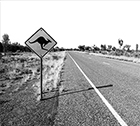Last week The Wall Street Journal published a 15-page leaked letter from the United States Anti-Doping Agency (USADA) addressed to Lance Armstrong and five others closely associated with his cycling career.
That letter and events that flow from it will change the course of professional road cycling forever. Armstrong’s reputation and deified place in sporting history — a position that for many is already suspect — now stands to be torn to shreds.
Roll back your wheels to the early 1990s.
Armstrong has just won his first big cycling race — the World Professional Road Race Championship — in a wet and wild Oslo, Norway in 1993. This he followed with a few stage wins in the Tour de France later that year and in 1995. Armstrong’s breakthrough win in the “classics” was at the 1996 Flèche Wallonne, a win that saw him follow in the footsteps of his compatriot Greg LeMond, who won the Tour de France in 1986, 1989 and 1990.**
Armstrong retired from professional road cycling in 1996 following a diagnosis of testicular cancer and, following a legendary recovery, he returned in 1999 to win seven Tours de France back-to-back through to 2005.
The Armstrong business plan for that recovery and subsequent domination of world professional cycling might look something like this:
Gather the best, toughest and brightest cyclists, lawyers, spin-doctors and support staff around me and meld them into a team that will carry all before it. Become the face of road racing and an icon of sport across the globe. Get rich beyond imagining, as will many who stay loyal to me. Raise the profile of cancer awareness through good public works and develop a charitable foundation and closely related commercial arm to promote not just cancer awareness but also my own profile. Make enemies along the way but prevail by sheer force of will — and better lawyers, public relations spinners — than anyone else. Enforce the omerta. Take this to the world and the world will take notice.
That plan worked well — an entrepreneurial American (and a Texan to boot) — spots a golden opportunity and grabs it fast by tooth and claw red with capitalist zeal.
Professional road cycling B.A. (Before Armstrong) was operated by an odd mix (as compared to other international team sports) of privately owned teams riding in privately owned races and governed by a complex web of national and international sporting regulators.
These arrangements suited all involved in a close-knit informal club that jealously protected the interests of its members and enforced a strict internal code — the “omerta” — particularly when awkward questions arose about the use of drugs and performance enhancing techniques — issues that had long-plagued professional cycling.
All that changed with the arrival of the Texan and the idea that a rider could become a brand sold to the world. Professional road cycling would never be the same again. Some elements of the old ways survived — particularly the “omerta” that dropped like a cone of absolute and rigorously enforced silence whenever performance-enhancing issues arose — largely because it served to prevent the exposure of cycling’s darkest secrets.
Armstrong, his brand and his gang went from commercial and performance strength to strength.
As Charles Howe, at Youngstown State University, revealed in this presentation in 2008:
… the Lance Armstrong Foundation (aka Livestrong) … provides support and education to those stricken with cancer, and helps to fund cancer research. His two books, It’s Not About the Bike, and Every Second Counts, were bestsellers.
Armstrong’s win went beyond not only cycling, but sport itself; the universal dread of cancer and his triumph over it made him an inspiration and symbol of hope for millions around the world, showing there could not only be life after cancer, but a better life than before.
There is no better evidence of this than the ubiquitous Livestrong bracelet, introduced in May 2004. Almost overnight, it became a cultural icon, and to date, more than 60 million have sold worldwide for at least $1 each or been given away with Nike merchandise.
As his agent, Bill Stapleton explained, “In the beginning we had this brash brand of Texan … a phenomenon. Then you layered in cancer survivor, which broadened and deepened the brand, but even in 1998 there was very little corporate interest in Lance. Then he won the Tour de France, and the brand was complete. You layered in family man, hero, comeback of the century, all these things. And then everybody wanted him.”
So far so good for the victim/hero/saint business model designed and delivered by the smartest guys in the room.
But too many questions, big questions, lingered about how Armstrong managed his extraordinary feats of power and endurance.
Those issues have been covered elsewhere in abundance — for a useful academic overview see Charles Howe’s useful review of professional cycling here.
Part VI — A Contemporary Challenge looks at Armstrong’s career and contains some useful links to other material of interest. For a look at what might happen if “Lance Armstrong went to jail and Livestrong went away, that would be a huge setback in our war against cancer, right?” this January 2012 piece by Bill Gifford in Outside magazine is essential reading.
From an Australian perspective, I’ve looked at Armstrong’s effect on Australian cycling, politics and health funding here and in Crikey more than a few times — see the list of those pieces below.
But back to the present. If “the smartest guys in the room” that engineered the rise and rise of Armstrong have relied upon unlawful methods to do so then all of a sudden they start looking like “a conspiracy of dunces”* instead.








Crikey encourages robust conversations on our website. However, we’re a small team, so sometimes we have to reluctantly turn comments off due to legal risk. Thanks for your understanding and in the meantime, have a read of our moderation guidelines.